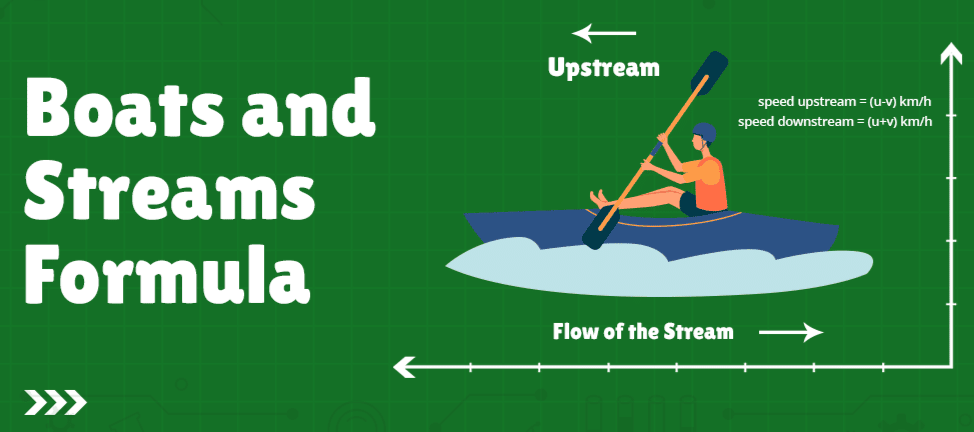Boats and Streams - Important Formulas, Logical Reasoning | Quantitative Aptitude (Quant) - CAT PDF Download
Important Formulas - Boats and Streams

1. Downstream
In water, the direction along the stream is called downstream.
2. Upstream
In water, the direction against the stream is called upstream.
3. Speed of Boat
Let the speed of a boat in still water be u km/hr and the speed of the stream be v km/hr, then
Speed downstream = (u + v) km/hr
Speed upstream = (u - v) km/hr.
4. Speed of Stream
Let the speed downstream be a km/hr and the speed upstream be b km/hr, then
Some more shortcut methods
5. Average Speed
Assume that a man can row at the speed of x km/hr in still water and he rows the same distance up and down in a stream which flows at a rate of y km/hr. Then his average speed throughout the journey
6. Distance
Let the speed of a man in still water be x km/hr and the speed of a stream be y km/hr. If he takes tt hours more in upstream than to go downstream for the same distance, the distance
7. Speed of Man
A man rows a certain distance downstream in t1 hours and returns the same distance upstream in t2 hours. If the speed of the stream is y km/hr, then the speed of the man in still water
8. Distance between two places
A man can row a boat in still water at x km/hr in a stream flowing at y km/hr. If it takes him t hours to row a place and come back, then the distance between the two places
9. Relationship between the Speed of Stream and Time Taken to Row Upstream and Downstream
A man takes n times as long to row upstream as to row downstream the river. If the speed of the man is x km/hr and the speed of the stream is y km/hr, then
|
167 videos|229 docs|95 tests
|
FAQs on Boats and Streams - Important Formulas, Logical Reasoning - Quantitative Aptitude (Quant) - CAT
| 1. What are the important formulas to solve problems related to Boats and Streams? |  |
| 2. How can logical reasoning be applied to solve problems related to Boats and Streams? |  |
| 3. How can the concept of Boats and Streams be applied in real-life scenarios? |  |
| 4. What are some common mistakes to avoid while solving problems related to Boats and Streams? |  |
| 5. How can I improve my problem-solving skills related to Boats and Streams? |  |






















